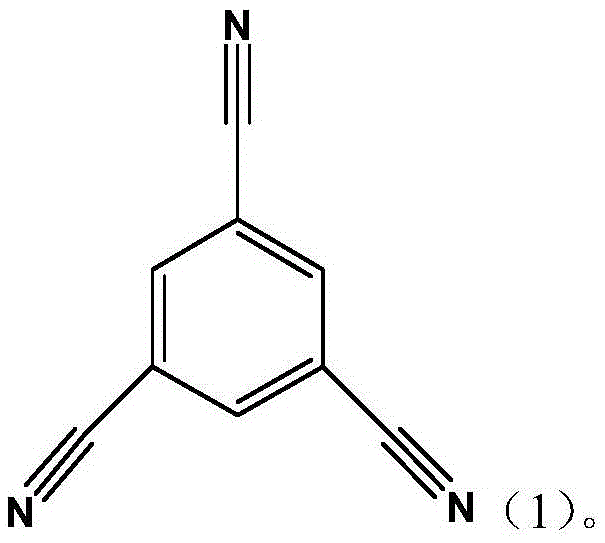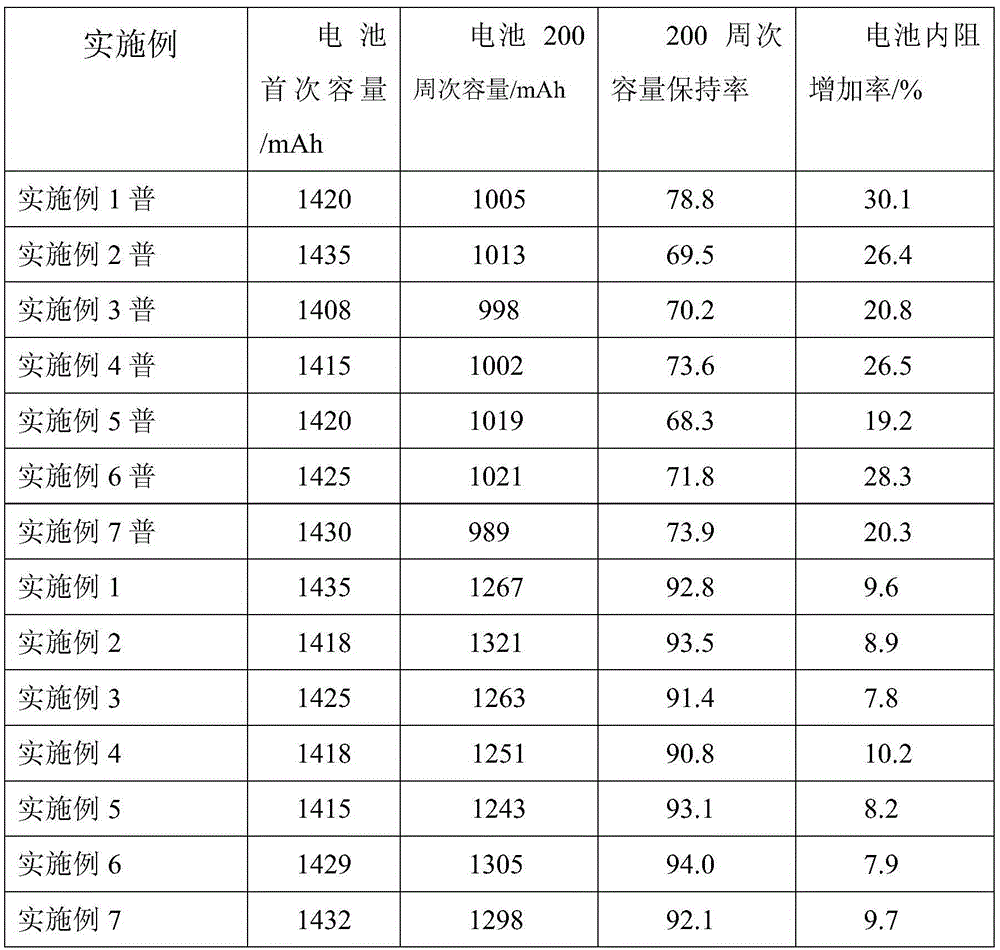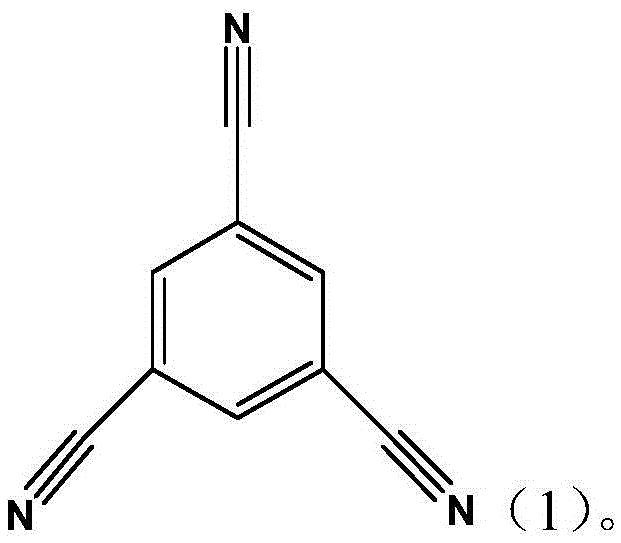Electrolyte containing tricyanobenzene and lithium ion secondary battery containing electrolyte
A technology of electrolyte and trimellitonitrile, which is applied in the field of designing lithium-ion battery preparation, can solve problems such as electrolyte oxidation, and achieve the effects of inhibiting catalytic decomposition, improving high-temperature storage performance, and inhibiting dissolution.
- Summary
- Abstract
- Description
- Claims
- Application Information
AI Technical Summary
Problems solved by technology
Method used
Image
Examples
Embodiment 1
[0027] (1) The cyclic carbonate solvent ethylene carbonate (EC) and the linear carbonate solvent ethyl methyl carbonate (EMC) and diethyl carbonate (DEC) are mass ratio EC:EMC:DEC=3:5:2 Mix, and use molecular sieve, calcium hydride, lithium hydride to purify and remove impurities and water;
[0028] (2) At room temperature, the conductive lithium salt LiPF 6 Dissolve in the solvent obtained in step (1), the final concentration is 1.0mol / L, and stir evenly to obtain a common electrolyte;
[0029] (3) Adding trifluoroethyl trifluoromethanesulfonate to the common electrolyte prepared in step (2), the dosage being 1.5% of the electrolyte quality; obtaining a high-voltage electrolyte for lithium-ion batteries.
Embodiment 2
[0031] (1) The cyclic carbonate solvent ethylene carbonate (EC) and the linear carbonate solvent ethyl methyl carbonate (EMC) and diethyl carbonate (DEC) are mass ratio EC:EMC:DEC=3:5:2 Mixing, using molecular sieves, calcium hydride, lithium hydride to purify and remove impurities and water;
[0032] (2) At room temperature, the conductive lithium salt LiPF 6 Dissolve in the solvent obtained in step (1), the final concentration is 1mol / L, stir evenly, and make common electrolyte;
[0033] (3) Adding trifluoroethyl trifluoromethanesulfonate to the ordinary electrolyte prepared in step (2), the dosage being 0.5% of the electrolyte mass; obtaining a high-voltage functional electrolyte for lithium-ion batteries.
Embodiment 3
[0035] (1) The cyclic carbonate solvent ethylene carbonate (EC) and the linear carbonate solvent ethyl methyl carbonate (EMC) and diethyl carbonate (DEC) are mass ratio EC:EMC:DEC=3:5:2 Mixing, using molecular sieves, calcium hydride, lithium hydride to purify and remove impurities and water;
[0036] (2) At room temperature, the conductive lithium salt LiPF 6 Dissolve in the solvent obtained in step (1), the final concentration is 1.0mol / L, stir evenly, and make common electrolyte;
[0037] (3) adding trifluoroethyl trifluoromethanesulfonate to the ordinary electrolyte prepared in step (2), the dosage being 1% of the electrolyte mass; obtaining a boron-containing film-forming functional electrolyte for lithium-ion batteries.
PUM
 Login to View More
Login to View More Abstract
Description
Claims
Application Information
 Login to View More
Login to View More - R&D Engineer
- R&D Manager
- IP Professional
- Industry Leading Data Capabilities
- Powerful AI technology
- Patent DNA Extraction
Browse by: Latest US Patents, China's latest patents, Technical Efficacy Thesaurus, Application Domain, Technology Topic, Popular Technical Reports.
© 2024 PatSnap. All rights reserved.Legal|Privacy policy|Modern Slavery Act Transparency Statement|Sitemap|About US| Contact US: help@patsnap.com










